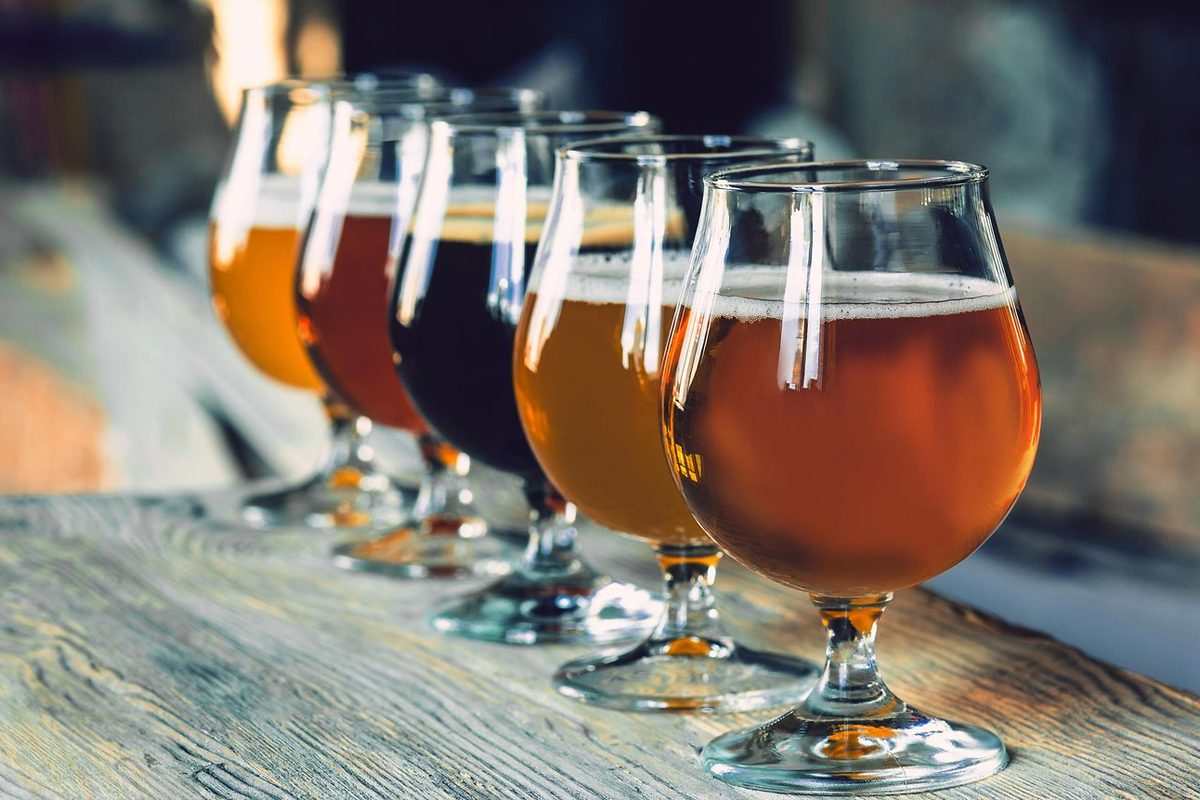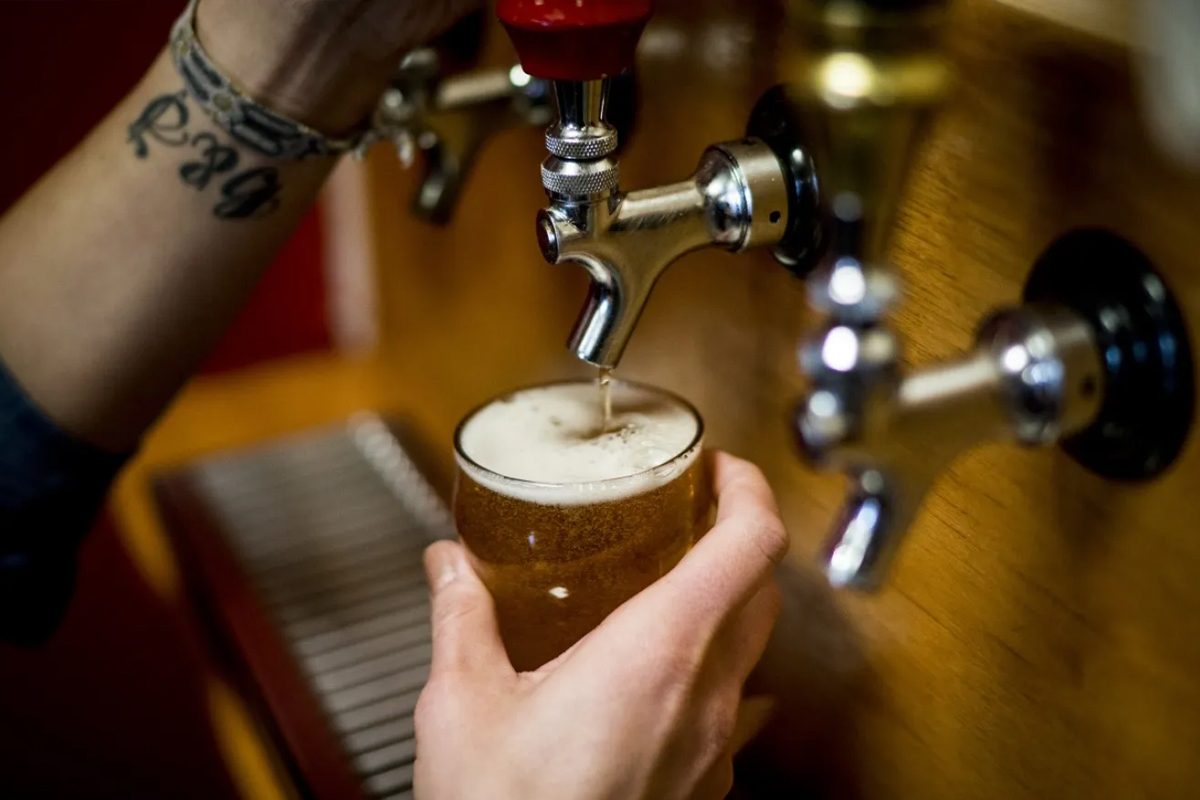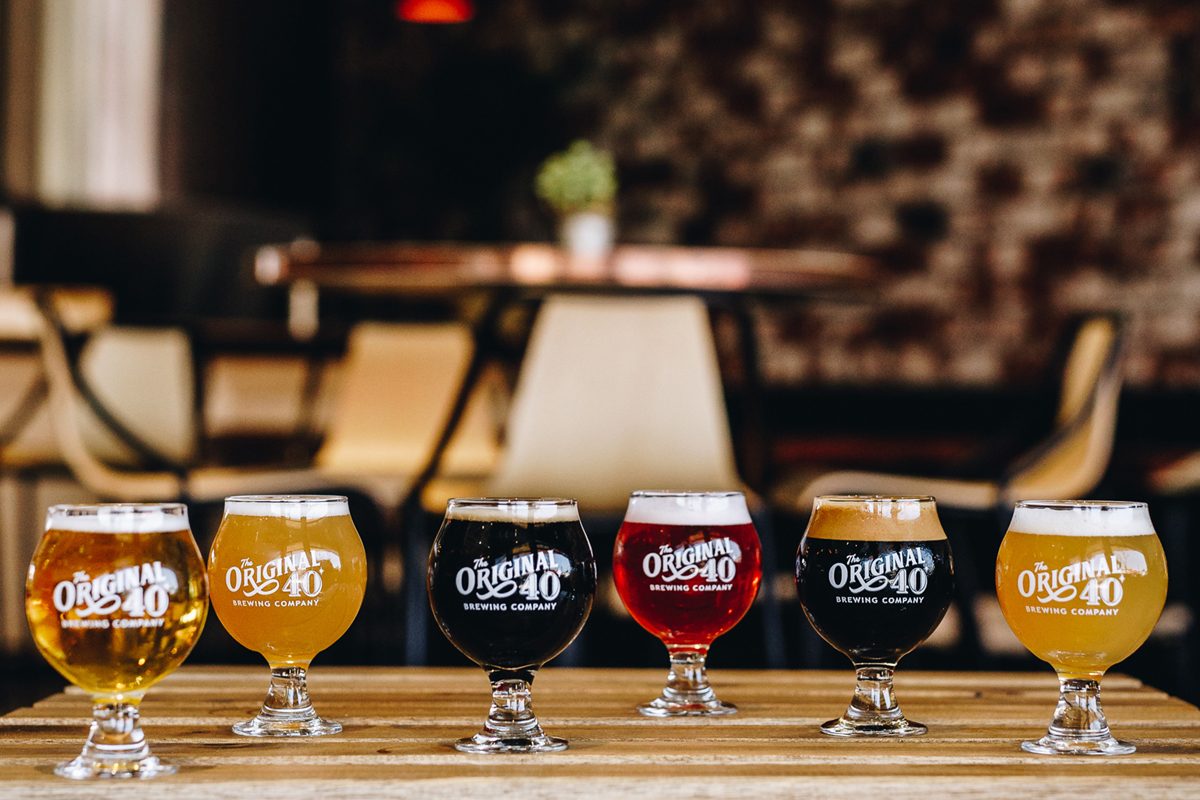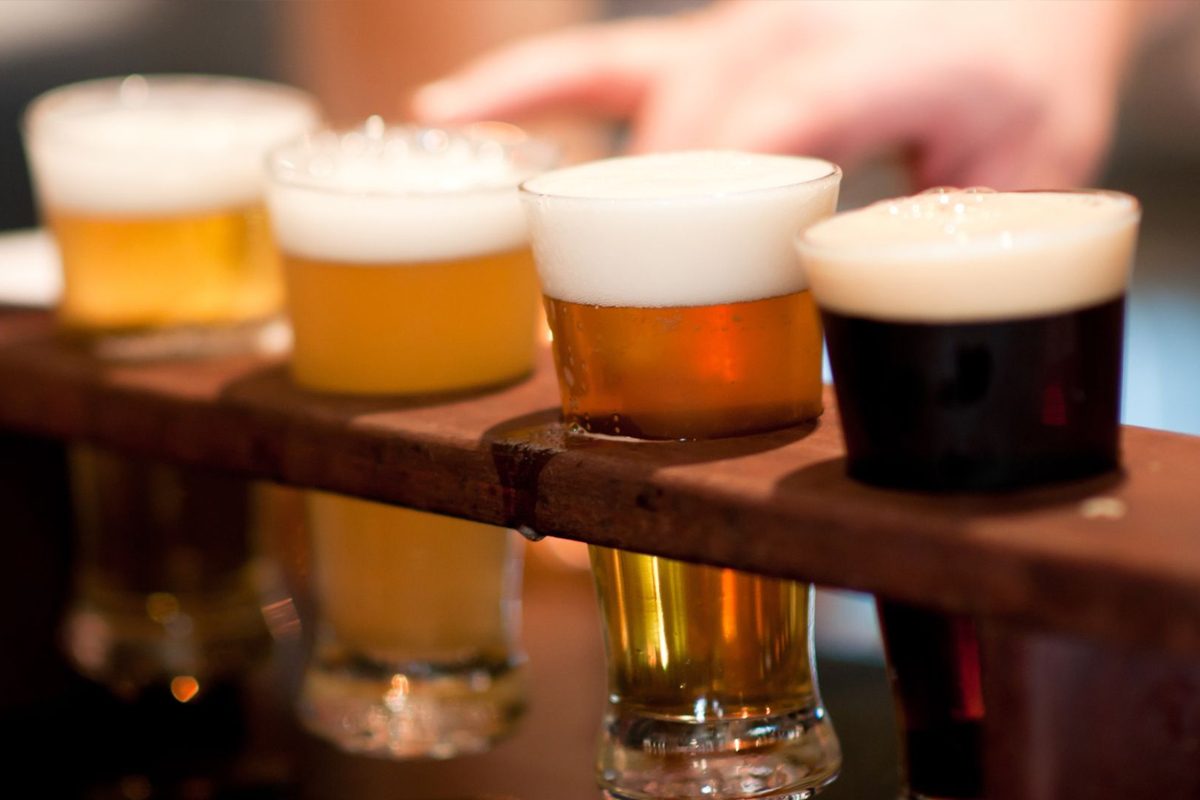
Differences Between Craft Beer And Industrial Beer
Beer, one of the world’s most popular beverages, has evolved into two main categories: craft beer and industrial beer. While both share common ingredients, they differ significantly in production methods, flavor profiles, and overall consumer experience. Craft beer is known for its small-batch production, use of high-quality ingredients, and focus on innovation and unique flavors. It often reflects local brewing traditions and the creativity of the brewer. Industrial beer, on the other hand, is produced on a massive scale, prioritizing consistency, cost-efficiency, and wide distribution. These beers tend to have milder flavors that appeal to a broad audience. The rise of craft beer has brought a resurgence of interest in artisanal brewing, while industrial beer remains a dominant force in the global market. This article explores the key differences between craft and industrial beer, examining how they shape the drinking experience for different types of beer enthusiasts.
Complete Guide

History of Craft Beer and Industrial Beer
Craft Beer Origins
Craft beer has its roots in traditional brewing practices that date back thousands of years. Early civilizations, such as the Sumerians and Egyptians, brewed beer on a small scale, using locally available ingredients and primitive techniques. The modern craft beer movement, however, began in the late 20th century as a response to the mass-produced, standardized beers that had come to dominate the market. In the 1970s and 1980s, homebrewers and small-scale brewers, especially in the United States, sought to revive old brewing methods and create beers with more distinctive flavors and character. Influential breweries such as Anchor Brewing, Sierra Nevada, and Boston Beer Company spearheaded this movement, emphasizing quality ingredients, innovation, and a return to artisanal techniques. Craft beer quickly gained popularity as consumers began seeking more diverse and flavorful options, giving rise to a global craft beer culture focused on creativity and community.
Industrial Beer Development
The development of industrial beer is closely tied to the industrial revolution of the 19th century. Advances in brewing technology, such as refrigeration, pasteurization, and steam-powered brewing equipment, enabled breweries to scale up production and distribute beer over long distances. Large-scale breweries emerged during this period, with companies like Anheuser-Busch, Heineken, and Carlsberg leading the charge. Industrial beer production focused on efficiency, consistency, and cost-effectiveness, using advanced machinery and scientific brewing methods to create beer that could be mass-produced and distributed globally. The rise of industrial beer in the 20th century made beer more accessible to the masses, but it also led to a homogenization of flavors as large breweries prioritized uniformity over variety. While industrial beer continues to dominate the global market, its focus on mass production contrasts sharply with the artisanal approach of craft brewing.

Key Differences Between Craft Beer and Industrial Beer
Ingredients and Quality
Craft beer is known for its focus on high-quality ingredients. Brewers typically use traditional ingredients like malted barley, hops, yeast, and water, often sourcing them locally or organically. The goal is to create distinctive flavors, and many craft brewers also experiment with specialty grains, fruits, herbs, and spices. Industrial beer, in contrast, often prioritizes cost-efficiency. To achieve this, industrial brewers may use cheaper adjuncts such as corn, rice, or sugar to reduce costs, which can lead to a lighter body and more neutral flavor. The focus is on creating a consistent product rather than exploring unique ingredients or flavors.
Brewing Methods
Craft brewers tend to rely on small-batch production techniques that emphasize traditional and artisanal methods, such as open fermentation or barrel aging. The brewing process is often more labor-intensive, allowing for greater experimentation and attention to detail. Industrial beer, on the other hand, is brewed using highly automated systems that maximize efficiency and output. Industrial breweries focus on standardized processes to ensure that every batch of beer tastes the same, regardless of where it’s brewed or when it’s consumed.
Flavor Profiles
Craft beer is celebrated for its diversity of flavors, ranging from intensely hoppy IPAs to rich, malty stouts, and everything in between. The use of unique ingredients and creative brewing methods results in bold, complex, and often experimental flavors. Industrial beer, however, is brewed with mass appeal in mind, resulting in simpler, more neutral flavors. Popular industrial beer styles like lagers and pilsners tend to be light, crisp, and easy-drinking, but they often lack the depth and complexity found in craft beer.
Production Scale and Distribution
Craft breweries generally produce smaller quantities of beer and focus on regional or local distribution. Many craft brewers distribute their products primarily through taprooms, specialty bars, and local stores, with limited reach beyond their immediate areas. In contrast, industrial breweries operate on a massive scale, producing millions of barrels annually. Their extensive distribution networks allow them to reach global markets, making their beer available in supermarkets, convenience stores, and bars worldwide.
Marketing and Branding
Craft beer marketing often revolves around storytelling, creativity, and local identity. Craft breweries tend to highlight their artisanal roots, the passion of the brewers, and the unique qualities of their beer. Labels and packaging are often designed with originality in mind, reflecting the brewery’s personality. Industrial beer brands, in contrast, rely heavily on large-scale marketing campaigns that emphasize tradition, quality, and social experiences. These companies invest billions in advertising, often sponsoring major events like sports championships to maintain a global presence.
Price and Availability
Due to the smaller production scale and use of higher-quality ingredients, craft beer is typically more expensive than industrial beer. Craft brews are often priced at a premium, especially for limited-edition or specialty beers. Additionally, craft beer is not as widely available, often found only in select markets, taprooms, or specialty shops. Industrial beer, being produced on a massive scale, benefits from economies of scale, allowing for lower prices. It is readily available at supermarkets, convenience stores, and bars around the world.
Innovation and Creativity
Craft breweries are known for pushing the boundaries of beer styles and flavors, with a strong emphasis on experimentation. Brewers may create limited-edition brews, collaborate with other artisans, or revive traditional brewing techniques. This spirit of innovation is a hallmark of the craft beer movement. Industrial beer, however, tends to prioritize consistency and predictability, leaving little room for innovation. While some industrial brewers have introduced craft-style offerings in response to consumer demand, the focus remains on producing beers that appeal to the broadest possible audience.
Consumer Experience
Craft beer enthusiasts often seek out breweries to enjoy a more personal and immersive drinking experience. Many craft breweries offer on-site taprooms where customers can interact with the brewers, tour the facilities, and try experimental or limited-edition beers. Craft beer is frequently seen as part of a broader cultural experience that values quality, authenticity, and community. Industrial beer, by contrast, is often consumed in more casual settings, such as parties or sporting events. Its widespread availability and consistency make it a go-to choice for social gatherings, but the consumer experience is typically less personal than with craft beer.
This comparison highlights the many ways craft and industrial beer differ, from the ingredients and brewing methods to the overall consumer experience. Each has its place in the market, offering something unique to different kinds of beer lovers.

Environmental Impact
The environmental impact of beer production varies significantly between craft beer and industrial beer, largely due to differences in scale, sourcing practices, and production methods.
Craft Beer
Craft breweries often emphasize sustainability and environmental responsibility. Many small brewers prioritize using locally sourced ingredients, which reduces the carbon footprint associated with transportation. Additionally, some craft breweries adopt organic farming practices or work with farmers who prioritize regenerative agriculture, helping to promote biodiversity and sustainable land use. Craft breweries also tend to focus on reducing waste, often implementing recycling programs, composting spent grains, or donating them to local farmers for animal feed.
Water conservation is a key focus for many craft brewers, as brewing is a water-intensive process. Craft breweries often implement systems to recycle water or reduce water usage in cleaning and production processes. Some breweries even use renewable energy sources, such as solar or wind power, to reduce their dependence on non-renewable resources.
Industrial Beer
Industrial breweries, due to their massive scale, can have a larger environmental footprint. The global distribution networks and large-scale production processes often require significant energy and water resources. Transportation, especially for global brands, involves a high level of carbon emissions as beer is shipped over long distances. Furthermore, the use of non-local ingredients and packaging materials may contribute to increased environmental impact.
However, many industrial breweries have recognized their environmental impact and are taking steps to mitigate it. Leading brands have invested in energy-efficient technologies, water conservation methods, and waste reduction programs. Some of the largest industrial breweries have committed to sustainability initiatives, aiming to reduce their carbon footprints by adopting renewable energy sources and improving efficiency in water and energy use. Industrial breweries, due to their scale, often have the resources to invest in large-scale environmental initiatives, but the overall impact remains more significant due to the sheer volume of production.
While both craft and industrial beer producers are working toward greater sustainability, the environmental impact of each differs based on their scale, sourcing, and production methods. Craft breweries often lead the way in terms of local sourcing and eco-friendly practices, while industrial breweries, despite their larger footprint, are increasingly investing in sustainability initiatives.

Legal and Regulatory Differences
The legal and regulatory landscape for craft beer and industrial beer varies significantly, influenced by the scale of production, distribution methods, and market presence.
Craft Beer
Craft breweries are often subject to more flexible regulations, particularly in terms of production and distribution. In many regions, small-scale brewers benefit from incentives and relaxed regulations designed to promote local businesses and support the craft beer industry. For instance, some governments provide tax breaks or grant funding to encourage artisanal production. Craft brewers may also have greater freedom to experiment with ingredients and brewing processes due to less stringent oversight compared to large industrial producers.
One of the key regulatory hurdles for craft breweries is distribution. In many markets, especially in the U.S., craft brewers face complex distribution laws, such as the three-tier system, which requires brewers to sell their products through distributors rather than directly to retailers. However, in certain regions, laws are evolving to provide more direct sales opportunities, including the ability to sell beer at the brewery or through local events, giving craft brewers greater market access.
Industrial Beer
Industrial beer producers, due to their size and market reach, are often subject to much stricter regulatory scrutiny. These large-scale breweries must adhere to rigorous standards related to food safety, labeling, advertising, and environmental practices. Given their global operations, industrial breweries must also comply with international trade regulations, which can be highly complex. Compliance with these regulations often requires significant legal resources, and violations can result in substantial fines or operational delays.
In terms of taxation, industrial beer producers typically face higher excise taxes due to the volume of beer they produce. These taxes are often calculated based on production levels, meaning that large breweries pay significantly more than their smaller craft counterparts. Moreover, advertising for industrial beer is tightly regulated, especially in markets where alcohol promotion is restricted or subject to specific guidelines.
While craft breweries enjoy more lenient regulations aimed at fostering local businesses and innovation, industrial breweries must navigate a more complex and rigid regulatory environment due to their global reach and large-scale operations. Both, however, must comply with local, national, and international laws that govern food safety, labeling, and responsible advertising.

Types of Brewing Yeasts
The cultural impact and community connection of craft beer and industrial beer vary significantly, reflecting their differing approaches to production, marketing, and consumer engagement.
Craft Beer
Craft beer is often deeply intertwined with local culture and community. Craft breweries typically emphasize authenticity, local ingredients, and traditional brewing methods, which resonate with consumers seeking unique, high-quality products that reflect the character of a particular region. Many craft brewers engage directly with their communities by hosting events, collaborating with local artists and chefs, or sponsoring local initiatives. Taprooms and brewpubs often serve as gathering places for people to socialize, fostering a sense of community around the brewery. Craft beer is also seen as a celebration of creativity and diversity, with brewers continuously experimenting with new flavors, styles, and brewing techniques. This cultural connection has helped the craft beer movement become more than just a business—it’s a way for communities to come together and share a passion for unique, locally produced beverages.
Industrial Beer
Industrial beer, while not as closely tied to local communities, has had a significant cultural impact on a global scale. Major beer brands like Budweiser, Heineken, and Corona have become iconic symbols, often associated with celebrations, sporting events, and social gatherings. Through massive advertising campaigns, industrial beer brands have embedded themselves in global culture, using sponsorships of major sporting events and festivals to create a broad social presence. While industrial beer may lack the community-focused identity of craft beer, it plays a key role in creating shared experiences on a larger scale. Its widespread availability and accessibility make it a go-to choice for casual consumption, providing a consistent product that people around the world recognize and enjoy.
Craft beer fosters a stronger local connection and cultural identity, while industrial beer impacts global culture through its mass-market presence and association with social events and entertainment. Both types of beer contribute to their respective cultural landscapes, albeit in different ways.

Summary
Craft beer and industrial beer represent two distinct approaches to brewing, each offering unique experiences to consumers. Craft beer is celebrated for its focus on quality ingredients, artisanal methods, and creativity, often reflecting the culture and community where it’s brewed. It emphasizes small-scale production, diverse flavors, and a deep connection with local consumers. Industrial beer, by contrast, is designed for mass production and global distribution, focusing on consistency, affordability, and wide appeal. Its presence in global culture is reinforced by large marketing campaigns and associations with major social events.
While craft beer appeals to those seeking unique and innovative flavors, industrial beer remains a popular choice for its accessibility and reliability. Both forms of beer have their place in the market, catering to different tastes and preferences. Ultimately, the choice between craft and industrial beer depends on the consumer’s desire for either experimentation and local authenticity or consistency and availability on a global scale.

Get A Turnkey Brewery Solutions
Whether you’re producing craft beer or industrial beer, having the right brewery equipment is essential for success. ZYB Craft offers comprehensive turnkey brewery solutions designed to meet the unique needs of every brewery, from small craft operations to large industrial facilities. Our turnkey systems include everything you need to streamline your brewing process, from brewing and fermentation tanks to packaging equipment, ensuring optimal efficiency and quality control.
At ZYB Craft, we work closely with our clients to tailor equipment solutions that match their production goals, whether it’s for experimental craft brews or high-volume industrial beers. We provide expert consultation, customized designs, and reliable technical support to help you optimize your brewery’s performance. With our turnkey solutions, you can focus on brewing great beer while we handle the technical details. Contact us today to learn how ZYB Craft can help you build a brewery that meets your exact specifications.



